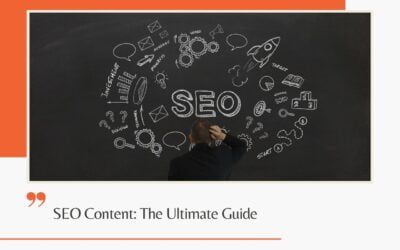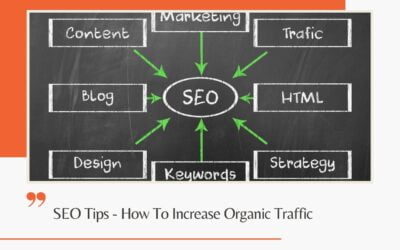The visitors to your website either take action, or they do not. Some become customers, registrants, subscribers, or leads. However, most do not. What your website conversion rate refers to is the percentage of your website visitors who take a certain action.
So what causes visitors to convert? What are the most important factors? What can you do to increase your website’s conversion rate?
In this article, we will discuss the reasons why visitors take action and what you can do to improve your website’s conversion rate.
Empathy + Context = Conversion
Each visitor to each page landed on your website for a reason. It is key to understand what these reasons are. Each visitor has hopes and fears, questions and desires. Being able to convert them begins with you being able to understand them and be able to speak to their individual needs.
Each visitor does a cost-benefit calculation for themselves. Is the effort outweighed by the rewards?
How can I benefit?
If the perceived value is higher than the effort needed to get this value, then the visitor converts. When motivation is stronger than any friction that is present, they will move forward to achieve your goal.
There are two major ways that your conversion rate can be increased: increase a visitor’s motivation and make taking action easier.
In both cases, the key is understanding your visitor. If we know what they are thinking, then we can reduce their uncertainty, increase their confidence, and assure them we have the best solution for them.
We will be drawing a map to help guide our decisions while we are improving our websites. The conversion map describes how we can connect with our visitors’ mindset, guide them towards taking action and move them along from being a suspect to being a prospect.
Questions from our audience – Answers – Evidence – Action

It all beings with the concerns and questions that our audience has. Our map starts in the minds and hearts of our visitors. We will begin there and then head out on this path:
- Address concerns and answer questions.
- Provide evidence to support our claims.
- Provide an easy way of taking action.
Easy, right. No. Most websites completely fail at this. They do not provide any specific calls to action, leave claims unsupported, and questions unanswered.
However, all marketing websites fail or succeed based on those criteria. The conversion map is relevant for all visitors, whether it is a multi-stakeholder, long-term decision about technology or a quick decision on choosing a plumber.
Answering questions
When you understand your audience, it isn’t hard to add the answer. Ask this simple question to your sales team:
What are the three questions that people always ask before hiring us or buying from us?
Next, put these questions and answers on your service or product pages. It is really that simple. There are also other answers you can add:
- What makes us different and stand out from our competitors (homepage)
- What were the reasons why we started this company? What are the things that we actually stand for (About Us page)
- Who works at the company? (team pages)
The primary purpose of your website is answering questions!
Your website should be similar to a conversation between a prospect and one of your sales reps. The visitor has specific questions that need to be answered in a certain order. An effective website increases its conversion rates by doing it in a frictionless, smooth manner.
Warning! Do not place your answers to important questions on your FAQ page. Place them on relevant service or product pages. Your map should include a short path for your visitors. They shouldn’t have to do a lot of searching for answers.
Add evidence
There are two different types of evidence for supporting your marketing claims. Use both to increase your conversion rate. Some visitors need information in order to make their decisions. Other people are affected more by social proof, first-hand accounts, or stories.
Check out this website’s marketing pages. We offer hard numbers that demonstrate our results. We provide client testimonials, along with company logos, names, and faces.
Amazon is an excellent example of effective conversion optimisation in action. They, of course, have book reviews. However, they also offer bar chats with data on the ratings.
Warning! Do not place testimonials from customers on the testimonials page on your website. Place them on the relevant service or product page. If evidence is not in context, there is a good chance that visitors will miss it. We recommend that you get rid of the testimonials page on your website.
Format, messengers, and messages
We all claim we are good in our marketing. We are good. We are the best. We are better. We are the messengers, and that is our message.
However, our conversion map demonstrates how this approach can be improved. The message needs to be specific to the visitor’s concerns. And the messenger should be a customer or other third-party. Evidence and answers.
The format is another key ingredient.
There are other ways to deliver messages other than words. Words are actually the weakest method. Visuals are a much more compelling and persuasive way to deliver your messages. Just like the strongest messengers are customers and third-parties, videos and images are the strongest formats.
Imagine someone who needs to know how soon something can be delivered before they will convert. In that case, an important message is “fast service.” There are various ways that you can deliver that message, some weak, some strong.
The following are examples of how formats and messengers are combined for a “fast service” message.
A brand uses text to make a claim about itself. It is expected, common, and weak. Don’t expect that approach to increase your conversion rates.
Evidence is added by a customer’s voice. The claim is now supported in a qualitative way through the use of social proof. However, the text has a limited ability for maximizing conversions.
A third party can provide an award or certification. This might not be a customer, but it still comes from a third-party source instead of the brands. A visual adds credibility and interest.
The most effective format and the strongest message is a completely upgraded video testimonial. This is the most powerful type of evidence, other than maybe an in-personal referral given by a trusted friend.
What can I do to increase my website’s conversion rate?
You should have a couple of ideas by now. Look at your website’s marketing pages. Run them through the following 5-point checklist:
- Does the page clearly state my service or product’s benefits?
- Does the page answer the visitor’s top questions?
- Is there evidence included on the page to support your claims? (case study, statistic, endorsement, testimonial)
- Is there a clear call to action on the page?
- Are formats other than text used on the page?
If there is anything missing, it probably can be added to the content. No programming or design necessary. In many situations, it may be fixed with some editing and writing. Ten extra minutes of work might result in years of improved results and a higher conversion rate.
Calls to Action
There is a call to action on every great page. The conversion rate is going to be lower if a page just ends on a dead-end. If a page ends with a simple personal suggestion to contact you, then you can expect a higher response.
Don’t simply install a “contact us” button. There are three ways at least for making a better button:
- Use first-person language: “I am prepared to increase my conversion rates”
- Be personal: “Are you ready to begin? Talk to Roger”
- Be specific: “Call a Conversion Expert”
First-person language is very powerful since it turns into an internal dialogue within the visitor’s mind. Instead of talking TO them, this call to action instead speaks AS them. This was confirmed by Michael Aagaard, a conversion researcher, in button text tests.
All of us are visitors. All of us covert.
There is no mystery to conversion mechanics. Also, our website visitors are not aliens coming from another world. It is us. All of us are visitors, and all of us become customers and leads on a daily basis.
To map your conversion, go back to the steps that you took when you made your most recent online purchase. Find your latest email receipt and check out the website. Look at your browsing history. Take some time to think about the questions you had, and what the answers were, and what evidence was offered to help build your trust.
Then check your digital marketing and your website. Do you see anything missing on your conversion map?





0 Comments